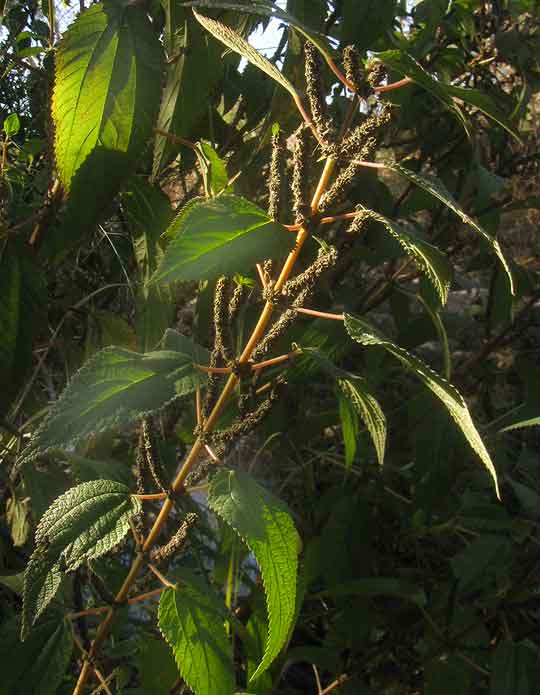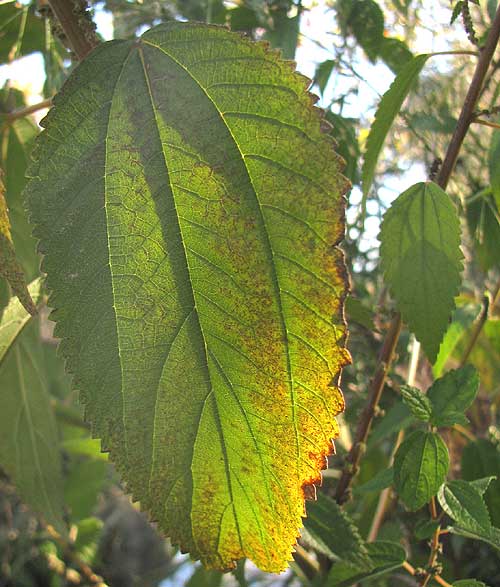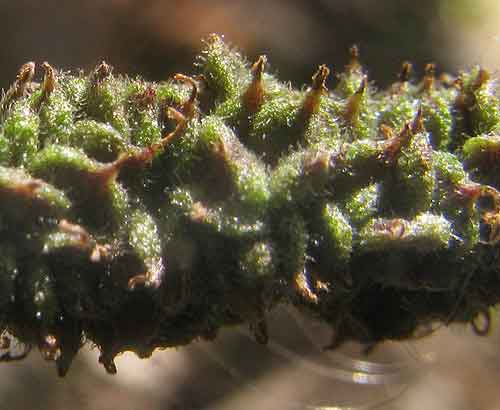Excerpts from Jim Conrad's
Naturalist Newsletter
from the November 10, 2013 Newsletter issued from the Frio Canyon Nature Education Center in the valley of the Dry Frio River in northern Uvalde County, southwestern Texas, on the southern border of the Edwards Plateau; elevation ~1750m (~5750 ft); N29.62°, W99.86°; USA
FALSE NETTLE
Sometimes plants turn up here that I'd thought could never survive in such arid country. Normally such species appear around seeps and at the water's edge. That was the case this week when a six-ft-tall (2m) herb or "subshrub" found in deep shade below a little waterfall where the Dry Frio broke over a thin outcropping of hard limestone. Below, you can see the plant's nettle-like leaves arising two per stem node, and erect, fingerlike spikes of tiny fruits from the leaves' axils:

The handsome leaves' margins were evenly saw-toothed, or serrate, with three principle veins arising from the blade base, as shown below:

The spikes were crammed with tiny, hairy, achene-type fruits -- achenes being dry, one-seeded fruits that don't split open at maturity. You can see a small part of one "infructescence" below:

This old friend from the humid East was the False Nettle, BOEHMERIA CYLINDRICA. Wildflower books wanting to distinguish it from other members of the genus call it the Smallspike False Nettle. Though it belongs to the Nettle Family, the Urticaceae, it's a "false" nettle because it doesn't bear stinging hairs the way "real" nettles do. Mostly we think of nettles as belonging to the genus Urtica.
Stems of members of the Nettle Family often contain such tough fibers that traditionally they've been used in making string, netting and such, and that's the case with False Nettle. Delaware Indians have been documented using False Nettle string for straps for carrying loads, and for making wampum belts. The Ojibwa made bow strings from it.
False Nettles appear in moist, deciduous woods, swamps, bogs, marshes, wet meadows and ditches throughout most of forested eastern North America, south through Mexico, Central America, the Caribbean and South America.